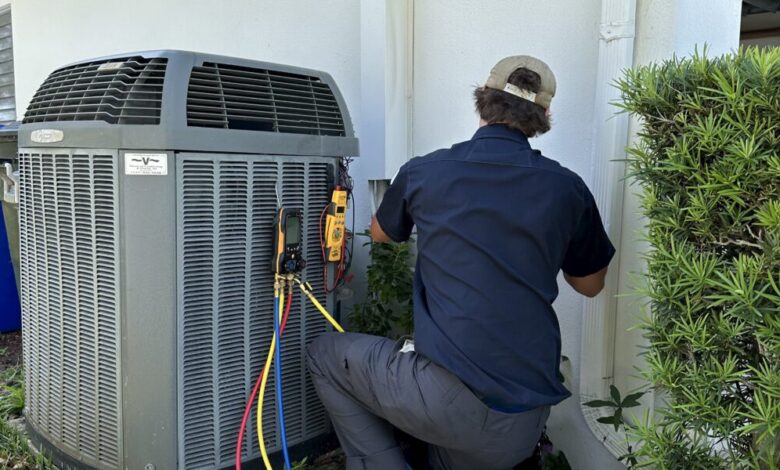How Rooftop AC Installation Protects Equipment From Weather Damage

Have you ever wondered how rooftop AC units withstand harsh weather?
Rooftop installations aren’t just about saving space; they also provide crucial protection against the elements.
From wind and rain to debris and sun exposure, a properly installed rooftop AC can significantly extend your system’s life and maintain optimal performance.
Physical Protection By Anchoring and Elevation
One of the most important steps in rooftop AC installation is securing the unit. Anchoring and bracing systems firmly attach the AC to the roof, preventing it from shifting or tipping during strong winds.
This not only protects the unit itself but also reduces the risk of damage to your roof and surrounding structures.
Elevated placement is equally critical. Raising the unit off the roof prevents potential damage from standing water or minor flooding.
It also keeps debris like leaves or roofing materials from accumulating around sensitive components.
Debris Protection With Covers and Cages
Rooftops are prone to falling debris, especially during storms or construction. Protective cages or covers shield the AC from damage caused by roofing materials, branches, or other objects.
High-quality reflective covers can also protect the unit from intense sunlight, reducing heat stress on the components.
Temporary protection is essential during maintenance or roofing projects. A simple plywood cover supported above the unit can prevent nails, tiles, or tools from causing damage.
Ensuring that any protective covering does not block ventilation is crucial, as airflow is vital for the AC’s operation.
Environmental Considerations
Sunlight can be harsh on rooftop AC units, causing components to overheat over time. Reflective covers and shading strategies help maintain a stable operating temperature and reduce strain.
Wind is another factor that rooftop units face regularly. Proper anchoring and bracing prevent the AC from shifting or tipping, protecting internal parts from sudden jolts or misalignment.
Water resistance is built into most outdoor units, but standing water can still infiltrate critical components like the motor. By elevating the unit and ensuring proper drainage, installers minimize the risk of water-related failures.
Additional Tips for Rooftop AC Longevity
Regular maintenance is key to keeping a rooftop AC unit in peak condition. Inspecting the protective cage, cleaning debris, checking for loose connections, and ensuring proper clearance around the unit can prevent small issues from becoming costly repairs.
Final Thoughts
Rooftop AC installation isn’t just a space-saving solution; it’s a smart way to protect your equipment from weather-related damage. With proper anchoring, elevation, debris protection, and regular maintenance, your rooftop unit can deliver reliable cooling year-round.
Bell Brothers specializes in professional rooftop AC installation and maintenance, ensuring your system is safe, efficient, and built to withstand the elements.

